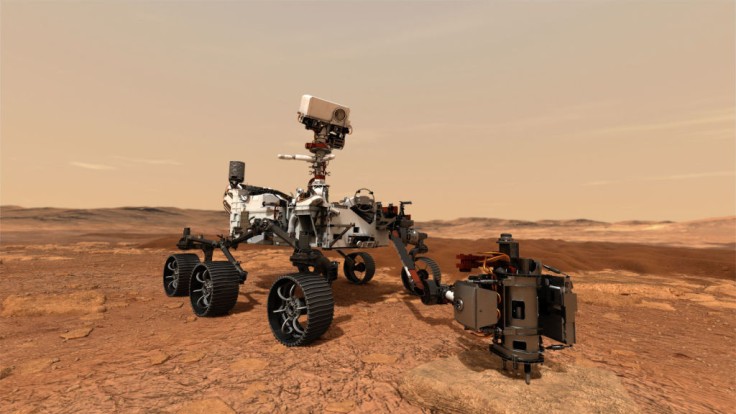
Just a few days after National Selfie Day, NASA showed an interesting piece from its Perseverance Rover, who took its first selfie from Mars with the Ingenuity Mars helicopter.
In addition, the Rover's microphone took the sound of the arm's motors operating, NASA said in its Mars Exploration Program website. These selfies would help engineers in checking the wear and tear of the Rover.
NASA Mars Perseverance Rover Selfie, a Complicated Process
The Jet Propulsion Laboratory at the California Institute of Technology further bared the process behind this incredible selfie. Taking a selfie for humans would just entail holding out a smartphone camera at arm's length after positioning it right and hitting the button. But for the Perseverance Rover in a faraway planet, taking that snap required a more complicated process.
This Perseverance selfie consists of 62 separate images, snapped one at a time using the Rover's WATSON camera, Engadget shared. JPL said the WATSON camera is designed to take "close-up detail shots of rock textures, not wide angle images."
To piece together the smaller images into one bigger image, the robotic arm moved the WATSON camera around to have an extensive view of the Perseverance Rover itself, the Ingenuity helicopter, and the surrounding Martian landscape--all under the command and control of NASA scientists.
The Rover's robotic arm acts as the "selfie stick" of the camera, JPL added, and with the images merged to create one fused product, this arm appeared just out of frame in the end.
NASA Mars Rover Selfie Team Composed of 12 Core Engineers
A core team of about 12 are part of the Perseverance project, JPL said. It included engineers executing tests, camera sequence development, image processing and editing. Commands sent to the Perseverance Rover have been plotted for about a week, JPL further said.
In plotting the commands, engineers used "Mars time," staying awake through the middle of the night and sleeping during the day. They also experience understandable "jet lag" to run the Perseverance selfie process, NASA stressed.
After the Rover sent back the images back to Earth, the Malin Space Science Systems (MSSS) image processing engineers edited them and pieced them together. They polished out blemishes coming from dust that settled on the camera's light detector and put together the individual image frames into a mosaic and "smooth their seams using software." This made the effect of appearing like one big photo.
Even with this historic milestone, Perseverance's selfie is actually not the first ever by a rover from another planet. The Curiosity Rover took a grayscale image of itself from the Martian surface in 2012. Because Perseverance's selfie stick turret is 30 inches long, which is longer than Curiosity's, the Perseverance photo was more challenging to take. JPL had to develop software to prevent collisions between the robotic arm and the rover--a mere centimeters away from each other.









